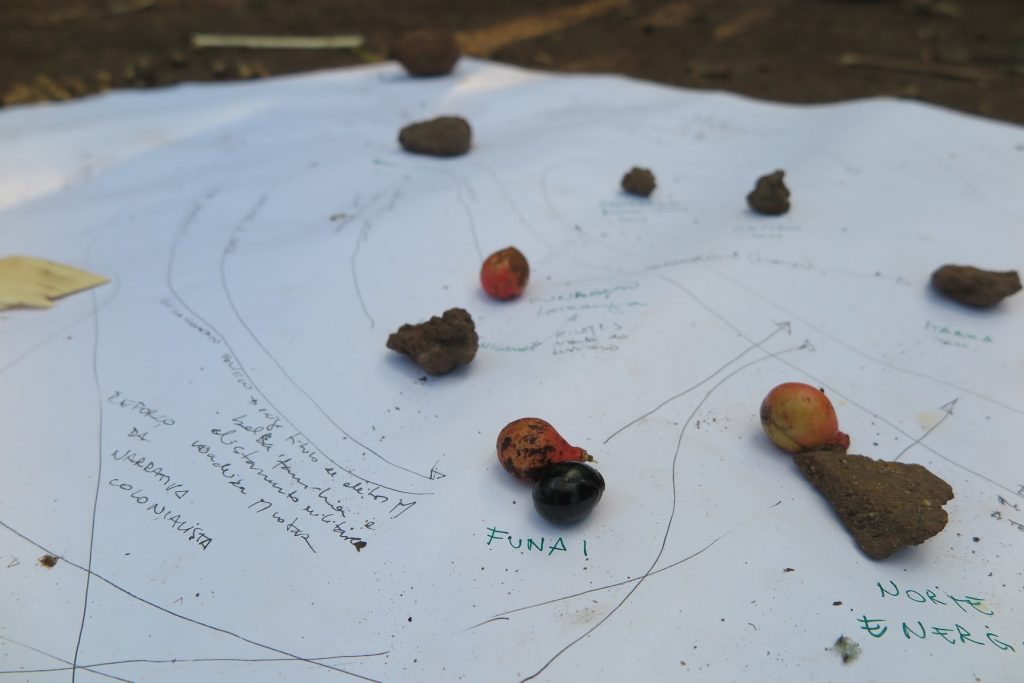Aaniin / Tanisi / She:kon / Hello
History.
The Wapatah Centre emerges from the Tier 1 Canada Research Chair of Dr. Gerald McMaster, with the purpose of fostering dialogue and conversation about Indigenous issues through a wide range of academic, art and culture research and applications. Wapatah’s work is an extension of OCADU’s greater mission to recenter Indigenous voices and perspectives in scholarship, practice, and critical discussions at local, national and international levels. Through its dedication to the aesthetics and contemporary realities of cultural contact, Wapatah provides nuanced and uniquely art-focused insight into relations between North America’s Indigenous and non-Indigenous peoples.
Dr. Gerald McMaster
Centre Director
Photo credit: Sebastian Kriete
mission.
The Wapatah Centre for Indigenous Visual Knowledge is dedicated to the documentation, communication and interpretation of Indigenous ways of seeing.
Vision.
Research Process.
Through creative and critical collaborations, Wapatah builds and maintains relationships between artists, scholars and practitioners across disciplines and in ever widening circles. It advances the research of Indigenous and non Indigenous scholars with the goal of fostering meaningful social, environmental and cultural impacts.

Behind the Name.
Kānawāpātahmōwin means the condition of seeing and perceiving, or visual knowledge in the Plains Cree language.
Kānawāpātahmōwin means the condition of seeing and perceiving, or visual knowledge in the Plains Cree language. According to the Creation Story, when the First Human was created the first thing this Being did was to rise from his laying position, to view his surroundings, and to perceive the beauty around. In this story, seeing was the beginning, then the birth of consciousness and knowledge. When the Great Kind Spirit asked this Being to speak and express, the first words uttered were, “Thank you Great Kind Spirit for creating this beautiful world that I see all around me, and thank you for creating me as well…” Thus we hear about the solemn and sacred act of seeing and as the wise storytellers of the past say, this act is repeated every morning by each and every human in the world as we open our eyes from a deep sleep.
Wāpātah, is the act of seeing and perceiving. At the Wapatah Centre, ways of seeing and perceiving are deeply imbedded in Plains Cree language-based views of and in the world. The Plains Cree word for understanding, nisitihtāmōwin[1], is a three-part teaching based on the birth of a child, crawling and walking. These are metaphors for the development of knowledge. First, we are born, then we begin to crawl and perceive and think and explore, then we stand, shakily at first, then from the first tentative steps, we walk and incorporate into our body and being, what it is that we understand (Celeste Tootoosis).
(1) From Website “Nehiya Masinahikan”, the definition is from Alberta Cree Elders.
Indigenous languages reveal alternative ways of seeing and experiencing art
Many people mistakenly say that Indigenous peoples did not have a written language, a written language being a colonial way of judging whether a society was ‘civilized’ or not. The truth is that Indigenous peoples all across Turtle Island had writing systems, such as the syllabic system that was given to the Cree through dreams, and then appropriated and claimed by the missionaries in the 1840s, to the petroglyphs we see on rocks and the visual knowledge displayed in the Haudenosaunee Wampum belts. All of these systems, like all alphabets require the knowledge of how they work. — Floyd Favel
The Plains Cree word for drawing is transliterated into “to tell the truth,” that is, to mark in a truthful way or to make real.
Waskawinin - everything moves: blood, wind, the body (Floyd Favel).
The Plains Cree language is one in which language is improvised; it is compositionally fluid. What can be shaped and created within the structure and rules? Waskawinin – everything moves: blood, wind, the body (Floyd Favel). It is in the spirit of this flexibility and improvisation that the Wapatah Centre extends beyond established parameters of disciplinary knowledge and cultural understanding.